[ted id=1652]Regardless of what you might see on shows like Grey’s Anatomy, teaching surgery is very difficult. This is a fact that Dr. Steven Schwaitzberg stresses in today’s talk.
Schwaitzberg, who spoke at TEDxBeaconStreet in November, is a pioneer in the field of minimally invasive surgery, which is less painful for patients and allows them to get back to normal life faster than traditional surgery. Schwaitzberg has spent his career not only helping to develop the techniques for laparoscopic surgery, but teaching the skills needed to perform it to others. As Schwaitzberg explains in this talk, the first step was developing a certification test for surgeons in the U.S. wishing to perform minimally invasive surgery. Now, this training and certification program is going global.
“Surgeons are not born. Surgeons are trained one step at a time,” explains Schwaitzberg. “But we have a problem—distance. We can’t travel everywhere.”
And there’s another problem, too—the language barrier. “Language is one of the most profound things that separates us,” says Schwaitzberg. “This examination is really hard. Even those who say they speak English [as a second language], only 14% pass this test. Because for them it’s not a surgery test—it’s an English test.”
This challenge has led Schwaitzberg and his colleagues on a hunt for a technology that will allow them to bridge both distance and language. And with the help of the IBM Accessibility Center, they have come up with something very cool — a Tower of Babel-defying tool that allows for translation in 11 languages.
To see a demo of this tool, which allows an instructor to teach complicated skills over video in real-time, with their words being translated into the student’s native language as they go, watch this inspiring talk.
Here, more talks on fascinating advances in the field of surgery.
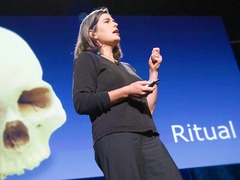 Catherine Mohr: Surgery's past, present and robotic future
Catherine Mohr: Surgery’s past, present and robotic future
Catherine Mohr: Surgery's past, present and robotic future
Catherine Mohr: Surgery’s past, present and robotic future“Surgeons are the tailors, the plumbers, the carpenters and some would say the butchers of the medical world: cutting, reshaping, reforming, bypassing, fixing,” says surgeon and inventor Catherine Mohr. At TED2009, she shows how far the field has come in 10,000 years — peaking with laparoscopic surgery, where the fixing is done via long needles in small incisions as doctors chart progress on a screen. She also gives a look at where the field is going — robots which allow surgeons to make tiny-but-complex maneuvers without any errors of the hand. |
 Quyen Nguyen: Color-coded surgery
Quyen Nguyen: Color-coded surgery
Quyen Nguyen: Color-coded surgery
Quyen Nguyen: Color-coded surgerySurgery isn’t as simple as it looks in medical textbooks, where different types of tissues are given different colors to differentiate them. Nope, inside the body, it is dark and hard to see, and the parts don’t look nearly as distinct. In this talk from TEDMed 2011, surgeon Quyen Nguyen introduces us to florescent markers that make tumors light up — making it much easier to for surgeons to operate and get all the cancerous tissue. |
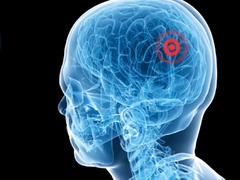 Yoav Medan: Ultrasound surgery -- healing without cuts
Yoav Medan: Ultrasound surgery — healing without cuts
Yoav Medan: Ultrasound surgery -- healing without cuts
Yoav Medan: Ultrasound surgery — healing without cutsWe’ve talked about minimally invasive surgery, but what about non-invasive surgery? In this talk from TEDMed 2011, medical inventor Yoav Medan shares a surgical technique that requires no cuts at all. It’s all about shaping ultrasound, and using it to treat issues like brain lesions and some cancerous growths … from outside the body. |
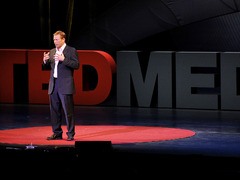 Ed Gavagan: A story about knots and surgeons
Ed Gavagan: A story about knots and surgeons
Ed Gavagan: A story about knots and surgeons
Ed Gavagan: A story about knots and surgeonsEd Gavagan had an emotional moment watching two medical students practicing their surgical knots on the subway. That’s because, years before, he was brutally stabbed on a city street and survived against all odds thanks to a highly-skilled surgical team. This talk from TEDMed 2012 is a love letter to the skills surgeons must master — as simple as tying knots but with the power to save lives. |
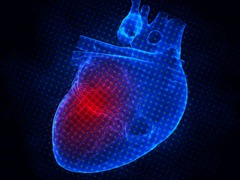 Tal Golesworthy: How I repaired my own heart
Tal Golesworthy: How I repaired my own heart
Tal Golesworthy: How I repaired my own heart
Tal Golesworthy: How I repaired my own heartA boiler engineer, Tal Golesworthy has a deep understanding of how pipes work. When he found out that he required a risky surgery on his aorta, he made an analogy to his work and recognized it as a plumbing problem. In this talk from TEDxKrakow, he tells the story of how his plumbing knowledge informed a new surgical procedure. |
 Erica Frenkel: The universal anesthesia machine
Erica Frenkel: The universal anesthesia machine
Erica Frenkel: The universal anesthesia machine
Erica Frenkel: The universal anesthesia machineIt’s a medical nightmare no one likes to imagine: what if the power goes out while a patient is getting surgery, and their anesthesia stops flowing? In this talk from TEDxMidAtlantic, medical technologist Erica Frankel shows that these machines are too prone to disruptions and demos a new machine that could solve the problem. |
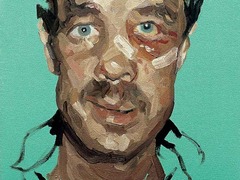 Iain Hutchison: Saving faces: A facial surgeon's craft
Iain Hutchison: Saving faces
Iain Hutchison: Saving faces: A facial surgeon's craft
Iain Hutchison: Saving facesIain Hutchison is a facial surgeon. But he’s not one you go to when you want plumper lips — he works with people whose faces have been severely disfigured. In this talk from TEDGlobal 2010 — which is not at all for the squeamish — he shares how advancing techniques have the ability to affect quality of life. |
Comments (4)
Pingback: 8 Ted Talks About Advancements in Surgery « SrC Massage Therapy
Pingback: { 26 – I } Charlas TED sobre avances en cirugía « Buscándole lo bueno al 2013